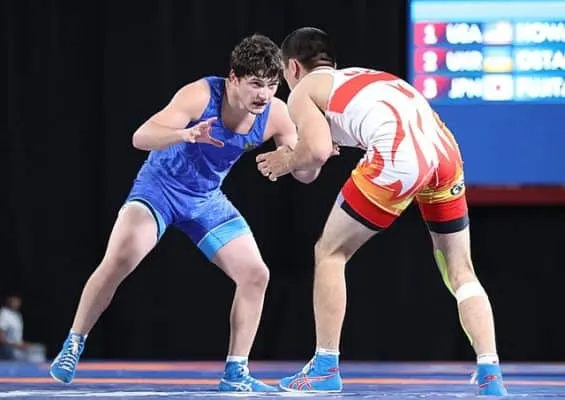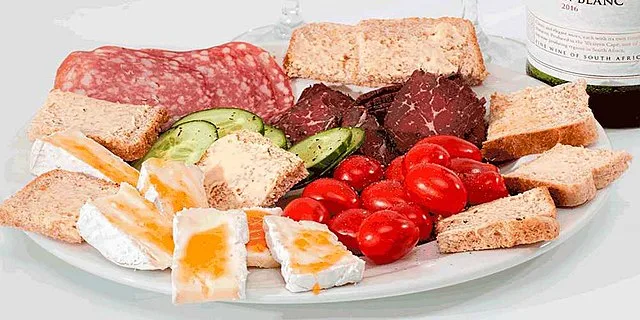
Wrestling is a growing sport and has become popular with young sports enthusiasts at high schools, colleges, and sports clubs. The Olympic sport has seen more and more people taking it up every year, however, due to being a contact sport, there are some concerns that wrestling may stunt the growth of young children. But is there any truth behind these concerns?
Wrestling at an early age cannot stunt growth. Studies have shown that restricting calories for cutting into a lower weight class can stunt growth, however. If a healthy, nutritious diet is followed, wrestling, like any other sport, can have many physical, mental, and emotional health benefits.
This article will discuss the potential dangers in the sport of wrestling with regards to growth, such as weight cutting, as well as ways to avoid stunted growth in young wrestlers and the benefits of wrestling as a sport.
What Are the Effects of Wrestling on the Body?
The sport of wrestling dates back to prehistoric times and is the world’s oldest known sport. Today, it is one of the most common sports in which young athletes compete against each other and boasts over 50 disciplines.
Wrestling is an intense anaerobic workout that requires strength, agility, and power, as well as mental fortitude. The sport places extreme levels of stress on the athlete’s arms, legs, knees, neck, and back and requires a rigorous training routine and a strict diet.
Many children start wrestling as early as the age of eight, and while both doctors and early child development experts recommend young children to take up sports at an early age, there are some concerns that tough, physical sports like wrestling may stunt growth.
Wrestling requires division by weight class, which can lead to athletes undergoing strict and restrictive diets to reduce their weight to drop a weight class. Research shows that a lack of proper nutrition and healthy foods significantly impacts growth among children, which, in turn, could harm their long-term health.
Young athletes, particularly those going through puberty, need a sufficient supply of nutrients and vitamins to develop muscles, tissues, and bones and any nutritional deficits at this age can harm their physical development.
Severe, prolonged dieting and restrictive calorie intake for children lead to malnutrition and can cause hormonal imbalances. This will negatively affect growth hormone production and the maturing reproductive system.
What Can Stunt Wrestlers’ Growth?
The main reason for wrestler’s growth becoming stunted is due to a poor diet and lack of proper nutrition. As mentioned before, the sport of wrestling requires division by weight class, and wrestlers, particularly young wrestlers, tend to severely restrict their food and caloric intake to fit into a lower weight class.
Tall, strong wrestlers who can drop to a lower weight class due to weight loss may have a significant advantage over smaller competitors.
Excessive or improper weight loss can result in various health problems including:
- stunted growth
- heart problems
- depression
- increased risk of infectious disease
- eating disorders
Poor nutrition and lack of enough calories can cause wrestlers to experience loss of strength and endurance, extreme fatigue, and slower reaction time both on and off the mat. Rapid weight loss and extreme calorific restriction can lead to heatstroke, heart failure, kidney failure, or death.
Other Negative Effects of Drastic Caloric Restriction in Wrestlers
Drastic dieting and calorie restriction can have several other negative effects on young athletes’ developing bodies in addition to stunted growth. According to medical writer Norman C. Hansen, restricted-calorie diets can also affect cognitive and social development in adolescents.
It was also found that female wrestlers had a higher risk for irregular or painful periods, which is a sign of hormonal imbalances.
Tall or Short? Does Size Matter in Wrestling?
Wrestlers come in all shapes and sizes and height can be both helpful and detrimental in wrestling. Tall wrestlers have a lower center of gravity, more bone mass, and less brute strength than their short counterparts, however, they have a longer arm reach, which makes for an easier cradle.
Tall wrestlers have an advantage over shorter wrestlers when executing moves like cradles, hip throws, and sprawls, however, shorter athletes may have a quicker reaction time.
RECOMMENDED FOR YOU: How Much Does Height And Reach Matter In Combat Sports?
What Can Wrestlers Do to Avoid Stunted Growth?
Eat a Well-Balanced, Nutritious Diet and Reduce Weight in a Healthy Way
Wrestlers can avoid experiencing stunted growth by eating a healthy and nutritious diet and healthily reducing weight. Junior high athletes and adolescents going through puberty and who are still growing should not participate in cutting weight to drop weight classes. High school and college wrestlers can attempt to reduce their weight in a healthy and well-maintained way.

Photo by Kiabatha
When reducing weight, athletes are advised not to lose more than 0.5% total body fat per week or 2% total body fat per month. Any more fat loss than this recommended range is considered unsafe. Athletes who lose more fat than this range can lose muscle mass.
During any period of weight loss, maintaining a healthy diet is essential. Athletes should eat a variety of foods from all the food groups and ensure they are consuming enough calories (energy) to support growth, daily, and sports activities. Hydration is also important during this time.
Once athletes have reached their desired weight, it is important to maintain that weight as this causes a higher resting metabolic rate and keeps weight down.
Learn to Wrestle Effectively in Different Weight Classes
Wrestlers can avoid having to take drastic measures to reduce their weight to drop a weight class by training in at least two different weight classes. Some of the weight classes in wrestling are relatively close together and wrestlers could train with fellow wrestlers in both weight classes.
What are the Health Benefits of Wrestling?
There are many physical and mental benefits to wrestling that far outweigh the potential negative consequences. Some of these benefits include:
- Better reflexes
- Improved cardiovascular system
- Increased strength
- Good exercise
- Mental, physical, emotional, and social benefits
Improved reflexes
In addition to strength and power, wrestling requires agility, flexibility, speed, and good reflexes.
Improved Cardiovascular Systems
Wrestling is a fantastic form of cardiovascular exercise and works every muscle in the body, including the brain! It is a high-intensity activity that works up a sweat and improves heart health and the cardiovascular system.
Increased Strength
Strength is at the core of wrestling and athletes need to work out in the gym and lift weights to increase strength, power, and endurance.
Good Exercise
Wrestling is a great form of exercise and an increase in physical activity has numerous benefits from increasing heart and lung health to maintaining healthy levels of blood sugar and cholesterol.
Mental, Emotional, and Social Benefits
Sports provide both physical and mental benefits, as well as emotional and social, and wrestling is no different. Wrestling teaches athletes to become disciplined and develop strong work ethics, think critically and strategically, and develop self-confidence and inner strength. It also teaches good sportsmanship and team-building skills and being part of a team improves communication and social skills.
Final Thoughts
Many contact sports have the potential for injury or adverse effects later in life. Wrestling is one such sport in which stunted growth may occur in younger athletes due to drastic dieting and hormonal imbalances. However, these risks can be avoided by eating a well-balanced, nutritious and non-restrictive diet and learning to wrestle effectively in several different weight classes.
